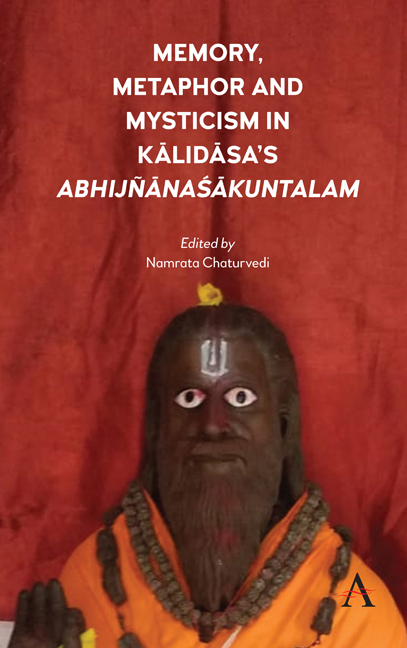Chapter 9 - Śakuntalā in Hindustani: Reading Select UrduTranslations of AbhijñānaŚākuntalam
Published online by Cambridge University Press: 23 February 2022
Summary
Basing itself on the Persian script, Urdu was thelingua franca of northern India and parts of DeccanIndia from the eighteenth century onwards. In 1836,it was adopted as the official language of theMughal Court under Akbar Shāh II (1806– 1837). Priorto the Turkish invasion (eleventh century), there isevidence of a language developing that took theshape of Hindavī/Hindī/Urdu. Amīr Khusrao (1253–1325) writes in his preface to Ghurat-ul-Kamāl about a poet (shāyar) Salman Masood Saad,whose three collections (diwāns) exist in three languages:Persian, Arabic and Hindavī. The term ‘Urdu’ wasfirst used for this language by Mushafi in the earlypart of the nineteenth century. This language wasknown as Hindavī, rekhtā and kharī bolī. The Turkishwriter Yusuf Khaas Haajib, in his book Quwata wa Ghubelek (1072CE), says that ‘Urdu’ means palace or city. MehmoodKashghari writes in Diwan eLughat ul Turk that ‘Urdu’ means a citywhere the king lives. In Hindustan, Bābur used thisword in Tuzk e Bābriin the sense of a tent or camp of a royalprince.
In literary prose, Qayām used this word in the meaningof language (MukhzanNikat, p. 33). In poetry, Mayāl, adisciple of Qayām, says in a couplet,
Shāh e jahān ke ahd se khalqat ke beech mein
Hindwī to naam mit gayā Urdu laqāb chalā
[In the period of Shāh Jahān, the general publicceased to use the word ‘Hindwi’ and started to use‘Urdu’ instead.]
Ghālib (1797– 1869), the most prominent Urdu poet ofnineteenth-century India, has named his collectionof letters as Ood-e-Hindī (The Fragrance of Hindī)(1850). With the establishment of Fort WilliamCollege in 1801, Urdu and Hindī began to beidentified as languages respective to Muslims andHindus.
In 1867, Sir Syed Ahmad Khān (1817– 1898), a proponentof the Urdu movement, demanded the British regime toestablish a separate vernacular university or torecruit Urdu faculty in Calcutta University. Inresponse to this demand, the Hindī movement began todemand a Hindī university for Hindus. In the sameyear, the Hindī movement proponents in Banarasdemanded the abolition of Urdu from the courts asthe official language to be replaced with Hindī.
- Type
- Chapter
- Information
- Memory, Metaphor and Mysticism in Kalidasas AbhijñnaŚkuntalam , pp. 169 - 186Publisher: Anthem PressPrint publication year: 2020



